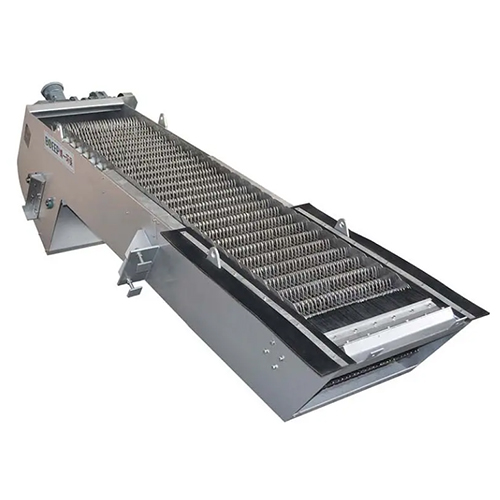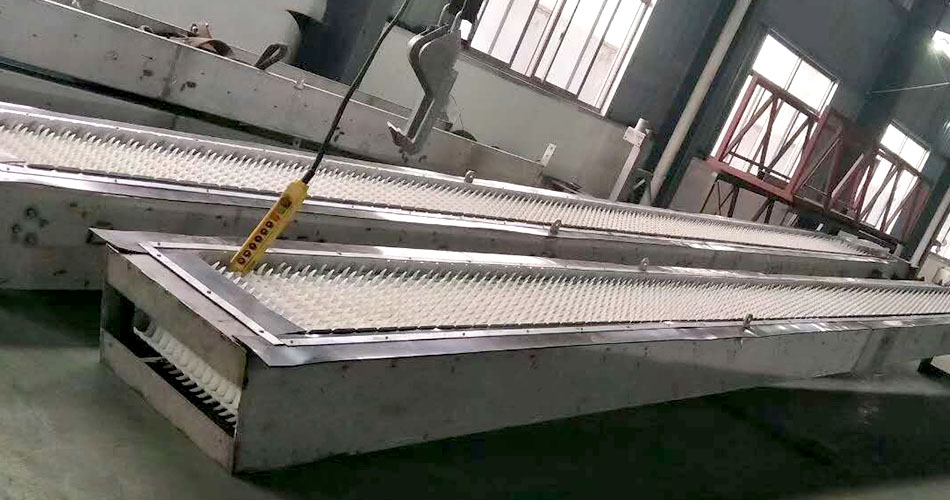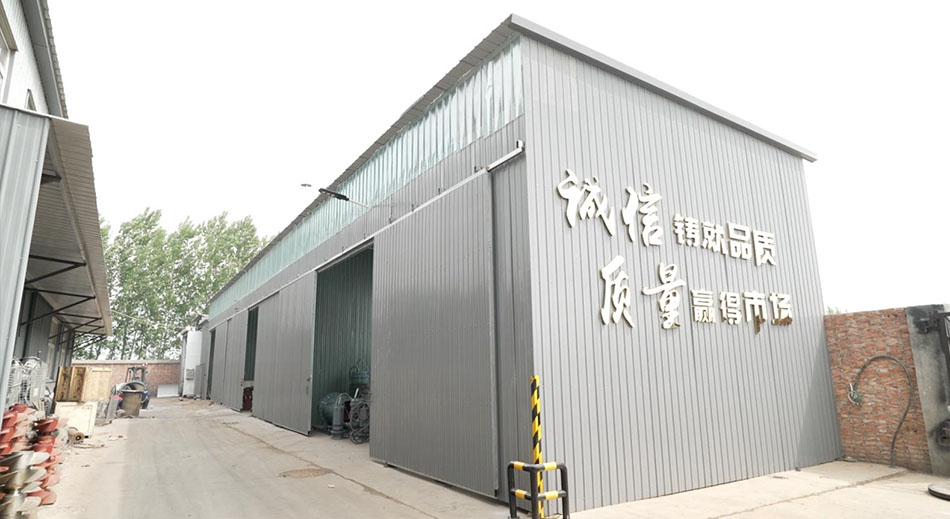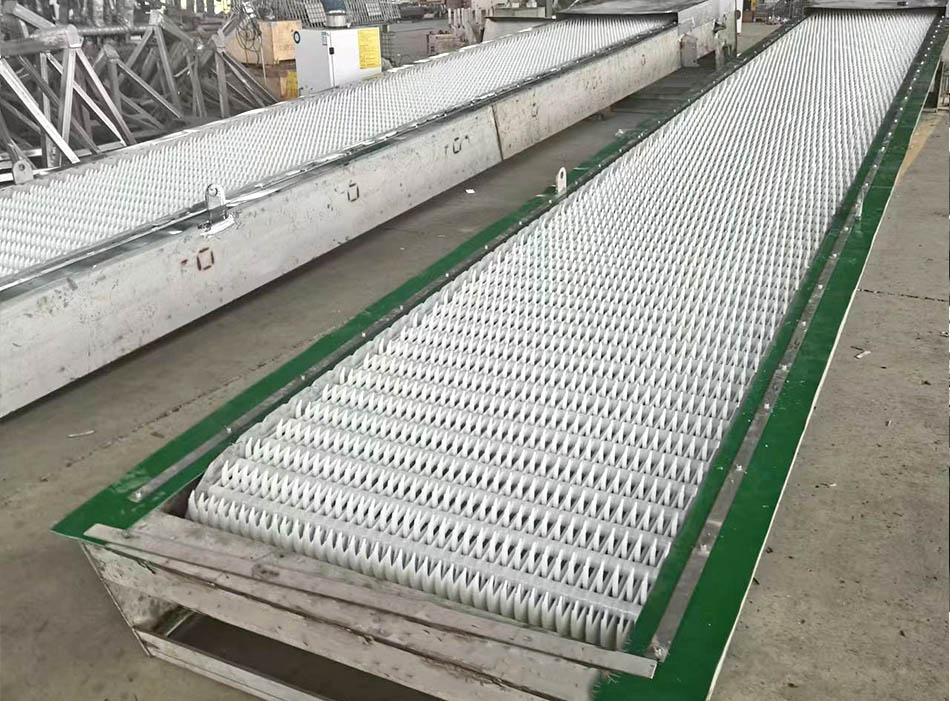Categories
Contact

Water Treatment Grilles
Water treatment grilles are essential components in water management systems, designed to remove debris and contaminants.
Different types of water treatment grilles include bar screens, drum screens, and microscreens, each serving specific purposes based on the size and nature of the debris they need to capture.
Bar Screens are used for capturing large debris such as plastics, wood, and metal fragments, making them ideal for preliminary filtering stages. Drum Screens utilize rotating drums with fine mesh screens to handle high flow rates and remove smaller particles, suitable for industrial applications like pulp and paper mills. Microscreens, with advanced mesh technology, are employed in industries requiring ultrafine filtration, such as electronics manufacturing, to remove microscopic contaminants.
Model GSHZ | Water depth in front of gate (m) | Fluid flow rate (m/s) | Rake tooth gap (mm) | |||||
2 | 3 | 5 | 10 | 20 | 25 | |||
Flow (t/d) | ||||||||
300 | 1.0 | 0.5-1.0 | 1850-3700 | 3700-7400 | 4500-9000 | 5300-10600 | 5500-11000 | 7100-14200 |
400 | 1.0 | 0.5-1.0 | 2080-4160 | 4100-8200 | 5200-10400 | 6200-13000 | 6650-13000 | 8600-17200 |
500 | 1.0 | 0.5-1.0 | 2900-5800 | 5700-14400 | 7100-14200 | 8800-17600 | 9000-18000 | 11700-23400 |
600 | 1.0 | 0.5-1.0 | 3700-7400 | 7500-15000 | 9200-18400 | 11000-22000 | 11500-23000 | 14900-29800 |
700 | 1.0 | 0.5-1.0 | 4500-9000 | 9000-18000 | 11200-22400 | 13500-27000 | 14000-28000 | 18200-36400 |
800 | 1.0 | 0.5-1.0 | 5300-10600 | 10600-21200 | 13000-26000 | 16000-32000 | 17000-34000 | 22100-44200 |
900 | 1.0 | 0.5-1.0 | 6000-12000 | 12300-24600 | 15000-30000 | 17400-34800 | 19000-38000 | 24700-49400 |
1000 | 1.0 | 0.5-1.0 | 7000-1400 | 14000-28000 | 17400-34800 | 21100-42200 | 22000-44000 | 28600-57200 |
1100 | 1.0 | 0.5-1.0 | 7800-15600 | 15500-31000 | 19400-38800 | 24000-48000 | 25000-50000 | 35100-70200 |
1200 | 1.0 | 0.5-1.0 | 8600-17200 | 17200-34400 | 21000-42000 | 25000-50000 | 27000-54000 | 35100-70200 |
1250 | 1.0 | 0.5-1.0 | 9000-18000 | 18000-36000 | 22500-45000 | 26000-52000 | 28000-56000 | 36400-72800 |
1500 | 1.0 | 0.5-1.0 | 11000-22000 | 22000-44000 | 24000-48000 | 27000-54000 | 29000-58000 | 37700-75400 |
1. Water Characteristics:
Debris Size: Determine the size and type of debris that needs to be removed. This helps in selecting the appropriate water treatment grilles with the right spacing between bars or mesh openings.
Flow Rate: Assess the flow rate of the water to ensure that the grille can handle the volume without causing excessive pressure drop or flow restriction.
2. Type of Grille:
Bar Grilles: These have parallel bars with gaps between them and are suitable for removing larger debris.
Mesh Grilles: Made from metal mesh, these are used for finer screening and can capture smaller particles.
Perforated Plates: These have holes punched into a metal plate and are used for varying levels of filtration depending on the hole size.
3. Material:
Corrosion Resistance: Choose materials that resist corrosion, especially if the water contains chemicals or is highly acidic or alkaline. Stainless steel is commonly used due to its durability and resistance to corrosion.
Strength and Durability: Ensure the material can withstand the physical stresses of the water flow and debris without deformation or breakage.

4. Installation and Maintenance:
Ease of Cleaning: Consider how easy it is to clean the grille. Grilles that are easily accessible and have features that facilitate cleaning and debris removal are preferable.
Installation Location: The water treatment grilles should be compatible with the installation space and fit correctly within the existing infrastructure.
5. System Requirements:
Compatibility: Ensure the grille is compatible with other components of the water treatment system, such as pumps and downstream filters.
Regulatory Compliance: Verify that the grille meets any local or industry-specific regulations and standards for water treatment equipment.
6. Performance Specifications:
Capacity and Efficiency: Check the grille’s capacity to handle the expected flow rate and its efficiency in capturing the required debris size.
Pressure Drop: Evaluate the pressure drop across the grille to ensure it does not adversely affect the system’s performance.

Size and Quantity
Selecting water treatment grilles starts with understanding the size and quantity of debris it must capture. Large debris, such as leaves, plastic, or wood, requires coarse bar screens with wider openings. Conversely, finer screens or microscreens are necessary for capturing smaller particles like sediment or organic matter in wastewater. The expected load of debris also determines the grille's design; higher debris loads require more robust systems to prevent clogging and ensure continuous operation.
Volume of Water
The flow rate of water passing through the water treatment grilles is another critical factor. Grilles must be designed to handle peak flow conditions without causing backlogs or overflow. Bar screens are suitable for high flow rates due to their large openings and sturdy construction, while drum screens and microscreens are designed for controlled flow environments, ensuring that even with high volumes, the filtration process remains efficient.
Physical Constraints and Available Space
Physical constraints and available space at the installation site heavily influence water treatment grilles selection. In confined spaces or retrofitted systems, compact and modular grilles are preferred. For example, polymer-based grilles are lightweight and easier to install in tight spaces. Additionally, the location's environmental conditions, such as exposure to corrosive substances or extreme weather, determine the materials used, with options like stainless steel for durability and corrosion resistance.

Budget
Budget considerations encompass the initial cost of the water treatment grilles, installation, and ongoing maintenance expenses. While stainless steel grilles offer durability and low maintenance, they come at a higher initial cost. Polymer-based grilles, like those made from fiberglass-reinforced plastic, provide a cost-effective alternative with good chemical resistance and lower maintenance needs. The long-term operational efficiency and maintenance frequency also impact the overall cost-effectiveness of the grille choice.
Trash Grille Bar Screen Manufacturers
Choosing a reliable manufacturer is crucial for ensuring the quality and durability of water treatment grilles. One reputable manufacturer is Tianjin Kairun, which offers a comprehensive warranty service for their trash grille bar screens. This warranty covers defects and ensures reliable performance over time, providing peace of mind and confidence in their products. The specific warranty period and coverage details should be directly confirmed with the manufacturer. For more information or inquiries about their products, you can contact them at catherine@kairunpump.com.
Conclusion
Selecting the right water treatment grilles involves a careful assessment of several factors, including debris size and load, flow rate, installation site constraints, budget, and the reliability of the manufacturer. Each type of grille, whether bar screens, drum screens, or microscreens, has its unique advantages tailored to specific operational needs. By understanding these factors and the technological advancements in grille design, industries can enhance their water treatment processes, ensuring efficiency, reliability, and compliance with environmental standards.
For those considering advanced water treatment grilles, Tianjin Kairun provides robust solutions with comprehensive warranty services. Their products, designed to meet diverse operational requirements, offer a balance of performance and cost-efficiency, supporting sustainable water management practices.







